#Anishinaabe First Nation
Note
I’ve seen Palestinians refer to their homeland as Occupied Palestine and “Israel” as the occupation, to better illustrate the settler colonial history of “Israel” and deny it legitimacy. As “America” is also a settler colony, would it be accurate to refer to the so-called “USA” in general as Occupied Turtle Island/the American Occupation or is that terminology specific to Palestine?
Turtle Island is the name given to North America by the Anishinaabe, though it's certainly not the only indigenous name. The Anishinaabe/Ojibwe/Chippewa just happen to be one of the largest native group so a lot of our terms are more easily popularized.
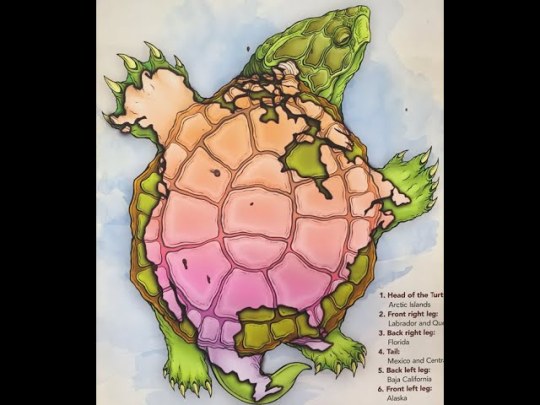
And I'd say yes and no as for it's accuracy tbh.
Like with Palestine, you have to be Very Clear when differentiating the people of Turtle Island and our wants from the US government and the people who support the US government.
You can't support Palestinian liberation and the existence of the state colonizing them. In the same way you can't claim to support Native liberation and Turtle Island but still want to remain our colonizer.
It's one thing to say you support native sovereignty, it's another entirely to realize that support in practice would mean calling & working for the US to be dismantled; it means Choosing to be a person from Turtle Island instead.
So yes, call it Turtle Island, but say it with the understanding and gravity of it.
Start by learning 5 medicinal plants and 5 edible plants in your area, figure out how you can support local tribes. Learn how to be from Turtle Island instead of the USA. Find values and principles to believe in that are your own and not just moralized propaganda.
The less dependent you are on the US, the less freedom you realize you have within it.
#asked#answered#turtle island#settler colonialism#colonization#decolonization#Decolonize#ojibwe#chippewa#Anishinaabe#anishinaabemowin#first nations#native american#ndn
2K notes
·
View notes
Text
First Nation court action against Ontario could invalidate all mining claims in the province
A court action launched by Grassy Narrows First Nation against Ontario could invalidate all mining claims in the province, a lawyer representing the Indigenous group said – a scenario that could cause havoc for the industry.
Grassy Narrows on Friday served Ontario with a notice of application asking the Ontario Superior Court to mandate individuals and companies to consult with the First Nation before seeking mining claims.
The Globe and Mail earlier in the week reported that the legal action was pending.
An Anishinaabe First Nation, Grassy Narrows is located about 80 kilometres north of Kenora in Northwestern Ontario. Its traditional territory covers approximately 7,500 square kilometres within the Treaty 3 area.
More than 10,000 mining claims have been issued in its territory without consultation. The First Nation says that Ontario’s current staking system violates both the government’s duty to consult Indigenous peoples under Section 35 of the Constitution, and the United Nations Declaration on the Rights of Indigenous Peoples, which requires free, prior and informed consent. [...]
Continue Reading.
Tagging: @newsfromstolenland
#cdnpoli#Indigenous politics#Indigenous sovereignty#Indigenous persecution#Anishinaabe#First Nations#Grassy Narrows
268 notes
·
View notes
Text
More art of Nanabozho bc he is so silly and scrimblo!~

A doobius little creature getting up to mischief
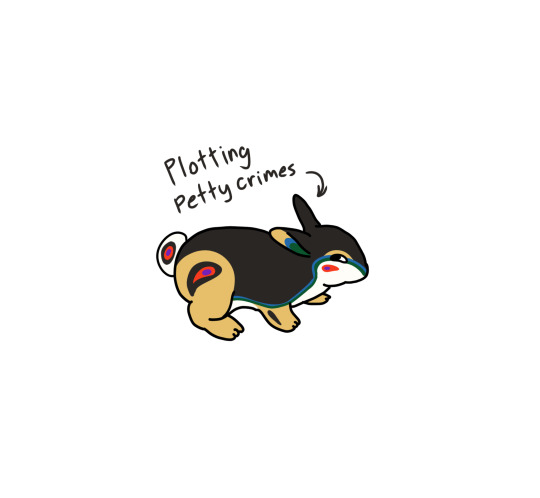
#art#digital art#nanaboozhoo#nanabush#nanabozho#wenabozho#anishinaabe#anishinaabeg#anishinaabe art#anishinaabe artist#ojibwe art#ojibwe#ojibway#ojibwa#first nations#native american#native#indigenous#indigenous art#indigenous artist#furry#furrydrawing#furry community#furry art#rabbit
65 notes
·
View notes
Text


Norval Morrisseau (Bingwi Neyaashi Anishinaabek First Nation, 1931-2007)
Bear Father, Bear Son, 1989
Acrylic on canvas, 121.9 × 91.4 cm (48 × 36 in.)
on display at Museum of Fine Arts, Boston
https://collections.mfa.org/objects/696834/bear-father-bear-son
“Morrisseau once described this painting as ‘Bear Gives Knowledge to Man. Man Gives Knowledge to Son,’ pointing to themes of kinship, teaching, and transformation. Against a symmetrical, yellow background, curved blue lines weave together humans, animals, insects, and orbs. Bodies filled with blocks of color slip into each other, obscuring where one figure begins and the other ends. The bear, related to Anishinaabe cosmologies and family organizational structures, has wide eyes, pointed teeth, and a strong back that supports the other beings. Bears were significant to Morrisseau, having personal connections with them through religious experiences while growing up at Sand Point reserve near Lake Nipigon, Ontario.
Now recognized as the most influential First Nations artist to work in traditional Western painting, Morrisseau invented a style, visualizing Anishinaabe histories and powers of the natural world. His flowing black outlines, swelling circular forms, and vibrant colors have inspired generations of artists.”
#animals in art#20th century art#bear#Indigenous art#First Nations art#Native American art#Canadian art#Norval Morrisseau#Anishinaabe#modern art#1980s#Museum of Fine Arts Boston#museum visit#painting
44 notes
·
View notes
Text
Happy Native American Heritage Month 2023!
Happy Native American Heritage Month 2023! To celebrate, we’re featuring books starring queer Native American and First Nations characters, by Native American and/or First Nations authors, as well as indigqueer poetry. While the usual affiliate links are included, I encourage you to check out and purchase from Birchbark Books, whose links are included as well.
To Buy Now
Rabbit Chase by Elizabeth…
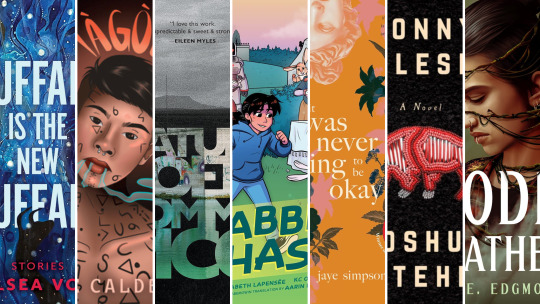
View On WordPress
#A Snake Falls to the Earth#Adam Garnet Jones#American Indian#Anishinaabe#Anong and the Ribbon Skirt#Arielle Twist#Birchbark Books#Cherie Dimaline#Cherokee#Craig S. Womack#Daniel Heath Justice#Darcie Little Badger#Dennis E. Staples#Drowning in Fire#Elijah Forbes#featured#Fire Song#First Nations#Gabe Calderón#Godly Heathens#H.E. Edgmon#Indigenous#Indigiqueer#Jen Ferguson#K.C. Oster#Màgòdiz#Métis#Muskogee Creek#Native American#Nature Poem
91 notes
·
View notes
Text






Support Indigenous artists/creators right now if you can! These are all available right now at thatdeathgirl.com/crafty-kwes among lots of other stuff, go look around :))
If financial support is out of reach for you right now, like, comment, and share as much as you can! It will help our stuff get to more people, which is half the battle for small creators.
Chi-miigwech <3
#indigenous#anishinaabe#mixed#indigenous heritage#indigenous art#ndn#anishinaabemowin#native#indigenous stories#n8v#algonquin#beadwork#indigenous beadwork#beaded jewelry#handmade#crafts#small artist#small business#artist#native art#indigenous culture#first nations
7 notes
·
View notes
Text
Nishnaabe Nagamonan
Disclaimer: Some works deal with historical wrongs, Missing and Murdered Indigenous Women and Girls, colonialism, and residential/boarding schools. Exercise caution.
Kateri Akiwenzie-Damm is a member of Saugeen Ojibway First Nation. Akiwenzie-Damm has served as Poet Laureate for Owen Sound and North Grey. In 1993, she established Kegedonce Press, a publishing house devoted to Indigenous writers. She has also authored Without Reservation: Indigenous Erotica.
Works: (Re)Generation, My Heart is a Stray Bullet.
Marie Annharte Baker is a member of Little Saskatchewan First Nation. Annharte's work concentrates on women, urban, Indigenous, disability, and related topics. She critiques life from Western Canada. After graduating with an English degree in the 1970s, she became involved in Native activism and was one of the first people in North America to teach a class entirely on Native women.
Works: Indigena Awry, Miskwagoode, Exercises in Lip Pointing.
Lesley Belleau is a member of Garden River First Nation. She is noted for her 2017 collection Indianland. She has an MA in English literature from the University of Windsor and is working on a PhD in Indigenous Studies from Trent University.
Works: Indianland.
Kimberly M. Blaeser is an enrolled member of the White Earth Reservation. Blaeser served as Wisconsin's Poet Laureate from 2015-2016. She is a professor of English at the University of Wisconsin-Miluwakee. A contemporary of Vizenor, she is the first critic to publish a book-length study on his fiction. She has been writing poetry since 1993.
Works: Apprenticed to Justice, Trailing You, Absentee Indians and Other Poems.
Diane Burns was a member of the Lac Courte Oreilles band. Burns was Anishinaabe through her mother and Chemehuevi through her father. Burns attended the Institute of American Indian Arts and Barnard College (within Columbia University). She was also an accomplished visual artist. She is considered an important figure within the Native American contemporary arts movement.
Works: Riding the One-Eyed Ford (available online).
Aja Couchois Duncan is a Bay Area educator, writer, and coach. Duncan is of Ojibwe, French, and Scottish descent. Her debut collection won the California Book Award. She holds an MFA in creative writing from San Francisco State University.
Works: Restless Continent, Vestigal.
Heid E. Erdrich is a member of the Turtle Mountain band. Erdrich is a granddaughter of Patrick Gourneau, who fought against Indian termination during his time as tribal chairman from 1953-1959. Erdrich holds a PhD in Native American Literature and Writing. Erdrich used to teach, but has since stepped back from doing it full-time. She directs Wiigwaas Press, an Ojibwe language publisher.
Works: Cell Traffic, The Mother's Tongue, Curator of Ephemera at the New Museum for Archaic Media.
Louise Erdrich is a member of the Turtle Mountain band. Erdrich is a granddaughter of Patrick Gourneau, who fought against Indian termination during his time as tribal chairman from 1953-1959. She is widely acclaimed as one of the most significant writers of the Native American Renaissance. Owner of Birchbark Books, an independent bookstore that focuses on Native Literature.
Works: Jacklight, Original Fire, Baptism of Desire.
David Groulx was raised in Elliott Lake, Ontario. Groulx is Ojibwe and French Canadian. He received his BA in Literature from Lakehead University and later studied creative writing at the En'owkin Centre in British Columbia. He has also studied creative writing at the University of Victoria.
Works: From Turtle Island to Gaza, Rising With a Distant Dawn, Imagine Mercy.
Gordon Henry Jr is an enrolled member of the White Earth Reservation. Gordon Henry Jr holds a PhD in Literature from the University of North Dakota and is currently a professor of English at Michigan State University. He has authored several novels and poetry collections and is a celebrated writer in Michigan.
Works: Spirit Matters, The Failure of Certain Charms.
Jane Johnston Schoolcraft was Born in Sault Ste. Marie on Michigan's Upper Peninsula. Schoolcraft was given the name of Bamewawagezhikaquay ('Woman of the Sound that the stars make Rushing Through the Sky') in Ojibwe. Her mother was Ozhaguscodaywayquay, the daughter of the Ojibwe war chief Waubojeeg. Her father was fur-trader John Johnston. Johnston is regarded as the first major Native American female writer. She wrote letters and poems in both English and Ojibwe.
Writeup containing works.
Denise Lajimodiere is a citizen of the Turtle Mountain band. Lajimodiere is considered an expert on Native American boarding schools following her work Stringing Rosaries, published in 2019. She is a poet, professor, scholar, and the current Poet Laureate of North Dakota.
Works: His Feathers Were Chains, Thunderbird: Poems, Dragonfly Dance.
Linda Legarde Grover is a member of the Bois Forte Band. She is a columnist for the Duluth Tribune and Professor Emeritus of American Indian Studies at University of Minnesota (Duluth). She has written poetry, short stories, and essays.
Works: The Sky Watched, Onigamiising.
Sara Littlecrow-Russel is of Ojibwe and Han-Naxi Métis descent. Russell is a lawyer and professional mediator as well as a poet. She has worked at the Center for Education and Policy Advocacy at the University of Massachusetts and for Community Partnerships for Social Change at Hampshire College.
Works: The Secret Powers of Naming.
Jim Northrup was a member of the Fond du Lac Reservation in Minnesota. Northrup lived a traditional lifestyle in his early years. As a child, he attended an Indian boarding school where he suffered physical abuse. Later in life, he served in the Vietnam war and experienced PTSD. Much of his poetry comes from these hardships.
Works: Walking the Rez Road, Rez Salute: The Real Healer Dealer, Anishinaabe Syndicated.
Duke Redbird was born in Saugeen First Nation. He became a ward of Children's Aid at nine months old when his mother died in a house fire. He began writing to give words to his experiences as an Indigenous man raised by white foster families. He is recognized as a key figure in the development of First Nations literature.
His poetry is available on his site.
Denise Sweet is a member of the White Earth Reservation in Minnesota. Sweet served as Wisconsin's Poet Laureate from 2004-2008. She has taught creative writing, literature, and mythology at the University of Wisconsin-Green Bay.
Works: Songs for Discharming, Palominos Near Tuba City.
Mark Turcotte is a member of the Turtle Mountain Band. Turcotte is a visiting assistant professor of English at DePaul University. He has published two books of poetry. His chapbook, Road Noise, was translated into French.
Works: The Feathered Heart, Exploding Chippewas.
E. Donald Two-Rivers was raised in Emo Township, Ontario. He moved to Chicago at age 16 and became involved with the Urban Native community there. A playwright, spoken-word performer, and a poet, Two-Rivers had been an activist for Native rights since the 1970s. He was the founding director of the Chicago-based Red Path Theater Company.
Works: Powwows, Fat Cats, and Other Indian Tales, A Dozen Cold Ones by Two-Rivers.
Gerald Vizenor is an enrolled member of the White Earth Reservation. Vizenor has published over 30 books. He taught at the University of California for many years and is currently at the University of New Mexico. He has a long history of political activism and he is considered one of the most prolific Indigenous ironists writing today.
Works: Favor of Crows, Cranes Arise, Empty Swings.
#first nations poetry#first nations literature#native american poetry#native american literature#indigenous poetry#indigenous literature#ojibwe#anishinaabe#nagamon#txt
6 notes
·
View notes
Text


(2020) anishinaabe hatsune miku for indigenovember/nativember 🪶
#ghostclementine art#my art#native hatsune miku#vocaloid hatsune#hatsune miku#nativember#indigenovember#indigenous#ojibwe#anishinaabe#hatsune fanart#first nations#native
134 notes
·
View notes
Text
Indigenous Tumblr, please interact!
TW: genocide and linguocide in America
I'm a linguistic enthusiast and non-American. I love how diverse the USA & Canada are - thousands and thousands of indigenous languages and they all are unique and so different from any language I've ever seen and heard. But all of them are endangered because the colonizers were erasing them with their speakers. Yet some indigenous languages are still spoken today. I love learning about these languages, but it feels like a colonists approach to learn about an indigenous language without learning its role in its community.
Dear indigenous people of Americas, where your languages are used today? What's their status in society? How do you feel about (not) knowing them? Is it a symbol of pride, resistance, and being part of your community or something that died long time ago? Do kids learn it in school?
If you feel uncomfortable with sharing your experience, it's fine to keep scrolling)
#indigenous#language#nativeamericans#native american#first nations#Cree#cherokee#Navajo#lakota#ojibwe#mi'kmaq#inuit#blackfoot#anishinaabe#Hopi
52 notes
·
View notes
Text
I'm so thankful my spirit guides and ancestors led me onto my reconnection journey, I still have to fully trace my roots but in the meantime I've been reclaiming my culture and decolonizing my mindset and it's been so healing for me 🙏❤️
#I missed community#it was always about coming home to community#text#indigenous#anishinaabe#first nations#native american#reconnection journey
3 notes
·
View notes
Link
youtube
Over 1,000 paintings seized, 8 people arrested in Norval Morrisseau art fraud, March 3, 2023
More than 1,000 paintings were seized and eight people face a total of 40 charges resulting from a years-long police investigation into the forgery of artwork by Anishinaabe artist Norval Morrisseau.
CBC News
@allthecanadianpolitics
#Anishinaabe#Norval Morrisseau#indigenous peoples#Woodland School#Indian Group of Seven#Bingwi Neyaashi Anishinaabek First Nation#First Nations#Copper Thunderbird#Canadian#art#Canada#LGBTQ#art forgery#Ontario#Thunder Bay#Woodlands style#art history#fraud#news#APTN#CBC
13 notes
·
View notes
Text

"Note to reader:
This piece is meant primarily for non-Indigenous people living on Indigenous lands. It is supposed to confront, while simultaneously comforting your uneasiness around land back and reparation conversations and actions. Please take your time in reading this, exploring where in your thoughts and body your discomfort shows up. Acknowledging and unpacking how it makes you feel is an important part of personal growth. Also this is only an opinion piece: recognizing the diversity of Indigenous teachings, governance and lived experiences means that Indigenous people will have different interpretations of this topic. "
When grandmothers and knowledge keepers say it, I tend to think it means more the stewardship and protection of mother earth. When Indigenous political leaders say it, it often means comprehensive land claims and self-governing agreements. No matter what meaning is attached, we as Indigenous nations have an urge to reconnect with our land in meaningful ways.
This is primarily about the First Nations of Turtle Island, but I believe the premise of it applies to all indigenous people harmed by colonialism worldwide. Simply apply this logic to the place where you are.
And it's a Very good starting point for understanding the concept of Landback. It has some ways you can start supporting Landback and even lists accounts to follow. Please click and read though it~
#first nations#native american#indigenous#ndn#native#n8v#decolonization#colonization#landback#reblog#boost#allies#ojibwe#chippewa#anishinaabe
98 notes
·
View notes
Text
It took more than a decade of litigation, but 21 Anishinaabe communities along the north shore of Lake Huron in Ontario will finally access a fair share of the wealth generated on their lands over the past 173 years.
The Robinson-Huron Treaty signed in 1850 promised its Indigenous beneficiaries annual payments in exchange for the right to use their lands.
A clause in the treaty explicitly tied the value of the annual payments to resource revenues.
Northeastern Ontario mining, lumber and fishing industries generated billions of dollars in profits over the past two centuries, but annual payments to First Nations were capped at 4 dollars per person in 1874 and haven't increased since.
In 2018, the Ontario Superior Court of Justice ruled that the Crown had a duty to increase annual payments to the beneficiaries of the Robinson-Huron Treaty. [...]
Continue Reading.
Tagging: @politicsofcanada
615 notes
·
View notes
Text
Richard Adams accidentally writing the most indigenous feeling fictional story is honestly so funny-- like, he HAD to have taken inspiration from irl indigenous cultures theres no way he didn't the guy literally studied history--
Perhaps I'll make a YouTube essay discussing it and why Watership Down resonated with me a lot as an indigenous person, and how the stories the rabbits tell about their folklore reminded me fondly of elders telling me stories, and how el-ahrairah is LITERALLY just nanabozho bc I just have to--
Would y'all wanna hear an in depth explanation?
#watership down#Watership down discussion#indigenous#anishinaabe#nanabush#nanabozho#wenabozho#nanaboozhoo#discussion post#discussion#native#native american#first nations
39 notes
·
View notes
Text
For #WorldOtterDay :

Christian Morrisseau (Anishinaabe, 1969-2022)
Otter Family, 2005
acrylic on canvas, 93.5 x 121.9 cm (36.79 ins x 48 in)
#animals in art#animal holiday#contemporary art#Indigenous art#First Nations art#Native American art#Christian Morrisseau#Anishinaabe#painting#Woodlands School#World Otter Day#otter#river otter
21 notes
·
View notes
Text






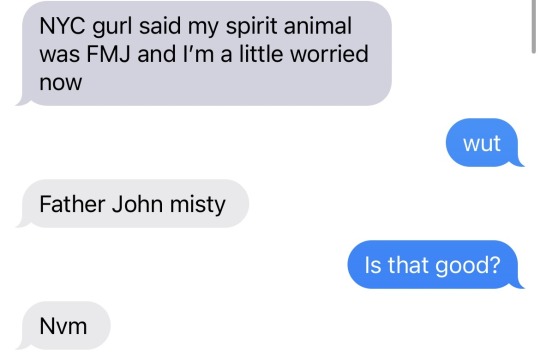
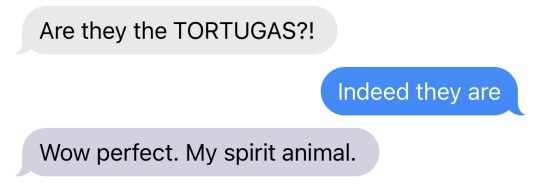
Y’all do know you’re doing this wrong, right?
Can you stop?
Yeah.
You can stop.

#native american#spirit animal#you’re doing it wrong#please stop#just stop#I am not your spirit animal#that’s not how it works#justin vernon#?#bon iver#father john misty#fjm#IS. NOT. YOUR. SPIRIT. ANIMAL.#anishinaabe#ojibwe#first nations#originals#you are on native land
11 notes
·
View notes